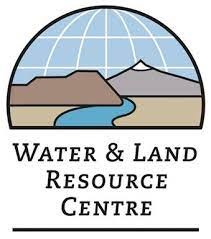
Ethiopia’s lack of proper protection, development and utilization of renewable natural resources has created economic and social challenges, further constraining their contribution to growth and development. Land degradation is contributing to the spread of poverty by reducing crop yields. In addition to harming efforts to ensure food security at the household level, it also contributes to the failure to achieve the desired results in improving the living standards of the community.
Several senior experts in the field, in collaboration with government and non-governmental organizations, discussed the development, management, management and institutional needs of our country’s natural resources. Scholars in the field presented various research papers at the forum. In their research papers, they discussed the causes, depths and solutions of the problems.
Dr. Gete Zeleke, Director-General of the Addis Ababa University Water and Land Resource Center, is one of the scholars who presented research papers at the forum. He wrote an article on the current state of Ethiopia’s natural resources, challenges and harms of natural resources.
Dr. Gete pointed out that Ethiopia’s landscape is fragmented, on the one hand, it has a diverse agricultural ecology and landscape, but on the other hand, it is a country with low agricultural productivity and poverty.
He said it is possible to move from the cold climate to the tropics by walking a little in Ethiopia. This means that it is possible to produce a variety of products and breed animals in one area. Dr. Gete pointed out that Ethiopia is a country with untouched natural resources.
He noted that it is a prosperous country that has not yet benefited much from agriculture and forestry. He said the lowlands of the country have attractive landscapes and abundant natural resources but they have not been managed properly.
According to Dr. Gete, the country has vast water resources but is not using them properly. Although she had large tracts of fertile land, she was unable to feed herself.
Although the country has a lot of natural resources, these natural resources have been severely depleted, Dr. Gete said. He said land grabbing is a key challenge in the country. Agricultural lands in the highlands have been severely degraded, erosion has severely affected the land, some areas have no vegetation, invasive species are taking over land, and weeds such as weeds are destroying lakes.
According to a study by Dr. Gete, Prosopis weed-infested 1.2 million hectares in central and southern parts of Afar State over the past 31 years. Despite concerted efforts to address the problem, efforts to alleviate the problem are doing more harm than good to the country’s resources.
According to Dr. Gete, efforts to protect and use natural resources are inconsistent and fragmented, weak and unstable, fragmented and poor land use. Dr. Gete points out that unplanned land management, poor animal husbandry and dam-grazing are exacerbating the problem. Also, most people use natural resources for fuel, deforestation, small farm expansion into natural forest areas and uncontrolled deforestation; they say, have contributed to population growth and the millennial farming system.
Although the scope and depth of the problem are increasing over time; he said that the problem is compounded by the lack of strong institutions to deal with the problem. According to the scholar, institutions working in the field of natural resource conservation have been the victims of repeated rehabilitation, which has hampered the conservation and development of natural resources.
He said the frequent reorganization and dismantling of institutions in the sector has led to a lack of dedicated professionals in the sector, a lack of confidence in the transfer of employees, a lack of institutional support and sustainability, a lack of effective manpower, and a lack of documentation.
According to Dr. Gete, land grabbing is costing the country dearly. Water pollution is caused by landslides; Washing of soil and nutrients; sediment filling lakes, dams and dams; depletion of biodiversity, contamination of water bodies by pathogens and heavy metals; at the same time, they are vulnerable to severe natural disasters, as well as food insecurity.
Millions are dying for food aid, says Dr. Gete. He attributed this to the failure of natural resource management, the collapse of institutions, and the lack of effective early warning systems.
He said one of the solutions is to implement an integrated water resource management system to prevent landslides. He cited the Grand Ethiopian Renaissance Dam as an example. He also said that if the integrated water use system can be implemented, the life of the dam can be extended.
Take the Renaissance Dam as an example, but the idea also applies to other dams. Dr. Gete also put a variety of factors. He also said that if the upper reaches of the river are properly managed, the life of the dam could be extended to 375 years.
According to Dr. Gete, it is important to ensure the sustainability of soil and water conservation campaigns and integrated water management efforts. Millions of farmers are digging steps every year, with millions of government officials and government workers assisting. Evidence suggests, however, that the main components of the steps are not sustainable.
A strong institutional organization has the potential to change that. He said the work should be managed by professionals, focus on quality and sustainability rather than quantity, and every household and the local community should be responsible for managing natural resource activities.
The green fingerprint initiated by the FDRE Prime Minister Abiy Ahmed, institutions and committees have been set up to plant 20 billion seedlings in four years, but sustainability is still in question. He also said that a strong institutional structure has the potential to change that.
According to Dr. Gete, an independent institutional structure can be created to sustain the positive momentum initiated by the Prime Minister and to make Ethiopia green. The entire process, including the selection of a nursery, the selection of a seedling, the preparation of a site, and the administration, should be guided by the institution.
Responsibility to protect transplanted seedlings needs to be taken into account by identifying the remaining forests and areas and taking conservation as a priority. Responsibility can also be placed on the institution.
According to the scholar, lack of proper institutional organization and lack of institutional capacity has led to the country’s misuse of its natural resources. Lack of food security, delays in overall economic development are contributing to increased vulnerability to climate change. The solution is to address the problem of natural resource management and development, land use planning, administration, and environmental protection.
BY STAFF REPORTER
ETHIOPIAN HERALD 22 SEPTEMBER 2021




